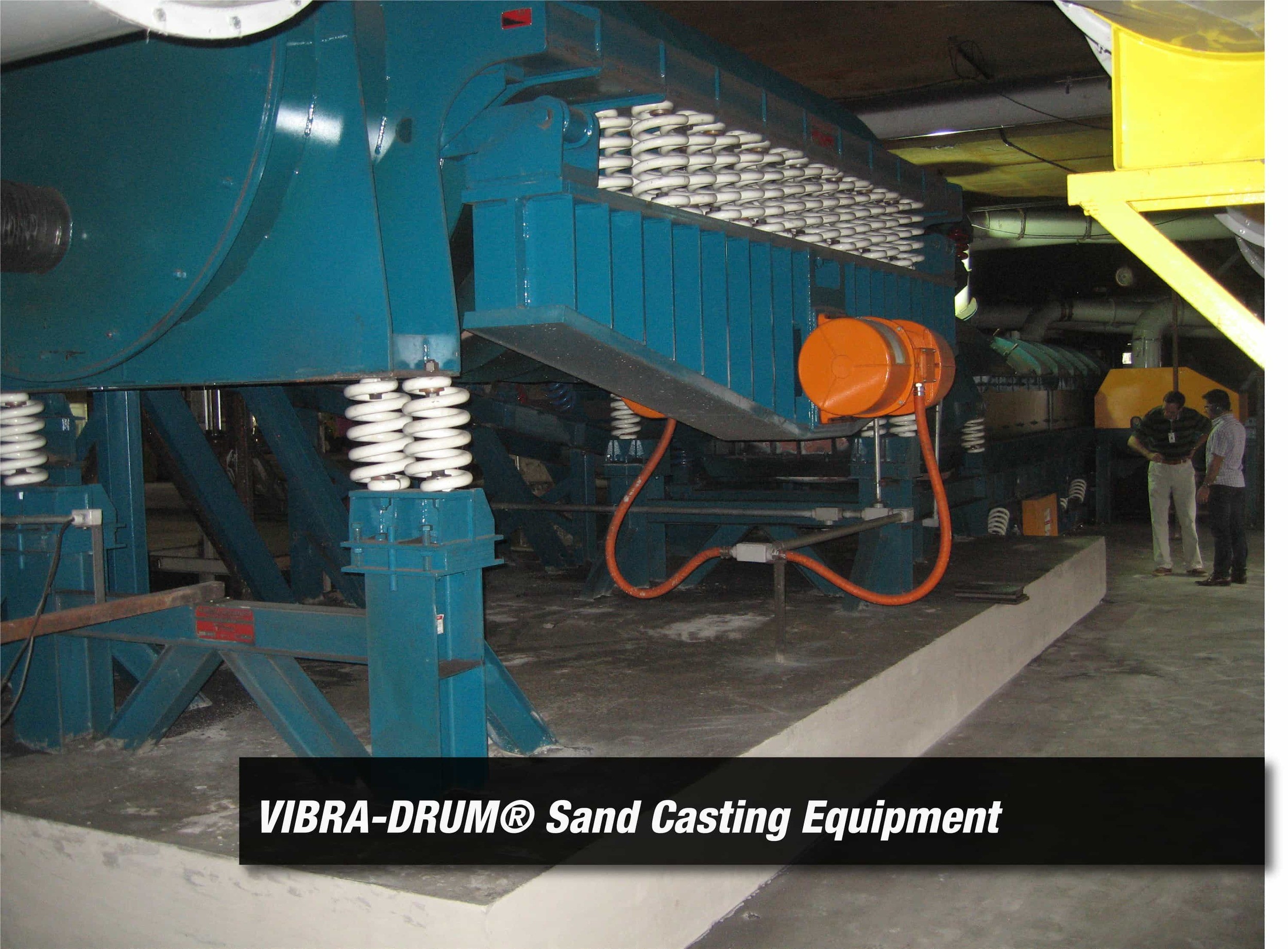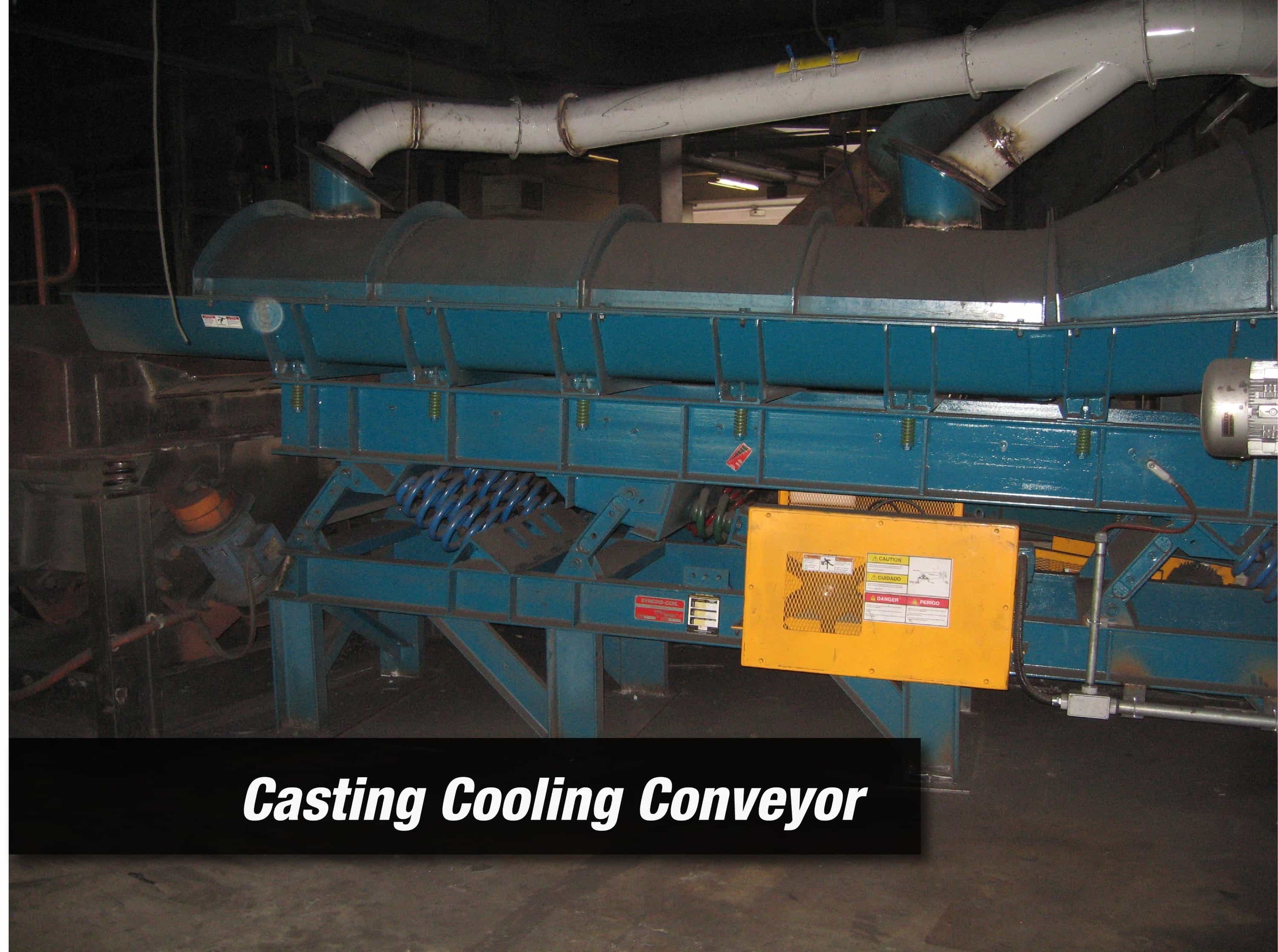Challenge
Julio Cesar da Silva had a problem. As Engineering Manager for Fremax in Brazil, Mr. da Silva’s No-Bake Foundry was experiencing breakdown after breakdown. The equipment they were running was incapable of handling temperatures in excess of 1200°F (650°C) with the no-bake molding process in which they are producing brake discs. The equipment in place was falling apart and they had to resort to utilizing chains to control the excessive vibration due to heat fatigue on the machinery not to mention there was no sand reclamation system in place.
Approach
In 2009, Mr. da Silva decided to look for a vendor to solve his conveying issues specifically. After contacting General Kinematics and learning about the wide range of vibratory equipment solutions available and technical expertise of the GK team, he made the decision to completely renovate the foundry system. The engineers at General Kinematics knew that there was one critical issue that would need to be handled. The extreme heat. As heat was the main factor destroying the last machines, GK would have to take this into account for every aspect of the design. Another area of focus would be the ability to thermally reclaim the sand. As always, by defining the system requirements and application at the beginning of the process, a better result would be achieved.
Solution
The engineers at General Kinematics proposed a unique system that utilized the VIBRA-DRUM® Sand Casting Unit to tumble the sand and castings, recovering the sand, by utilizing the heat of the castings to thermally break down the sand binders. Following the VIBRA-DRUM®, a series of units are used to separate the sand from the castings and cool the castings. This includes GK Conveyors, GK Shakeouts, a GK VIBRA-MILL® Vibratory Batch Sand Reclamation, and a GK Sand Screen. This equipment is built with allowances for the extreme thermal expansion to be controlled as the glowing hot brake discs are transported. The castings then make their way through the shakeout, separating them from the sand before both sand and discs head into the triple deck conveyor. The discs then move back upstairs to the cleaning room, as the sand is sent to either be cooled and screened or back through the VIBRA-DRUM® to be further reclaimed via a GK V-Trough Conveyor. Within the sand cooling process the sand is sent through the GK Sand Screen and VIBRA-MILL® to decrease and control the molding sand grain size and dispose of the isocure binder.
Results
It has been 8 years since this system was installed and it has been running smoothly ever since. In fact, the system runs completely automated: as the discs are sent downstairs, run through the process and come back up at the end, the equipment is trusted to do the job without need of a chaperone. Mr. da Silva (now Chief Operating Officer) refers to his foundry operations as ‘Before GK’ and ‘After GK’. “Before GK was like the dark ages,” said da Silva. “After GK, the units have performed well and uptime has improved immensely.” Interested to learn how GK can improve your foundry process? Contact our team of experts today.







